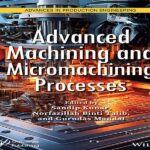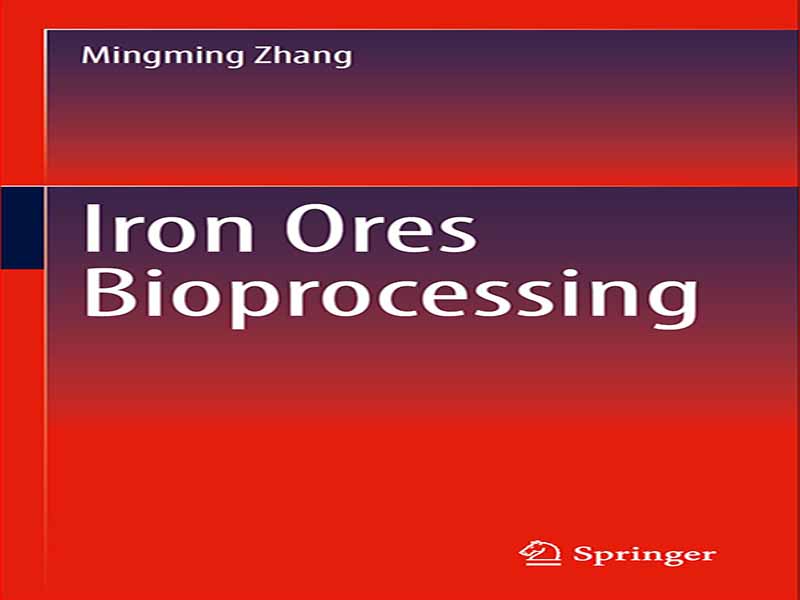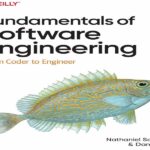- عنوان کتاب: Iron Ores Bioprocessing
- نویسنده: Mingming Zhang Preface
- حوزه: بیوتکنولوژی
- سال انتشار: 2022
- تعداد صفحه: 180
- زبان اصلی: انگلیسی
- نوع فایل: pdf
- حجم فایل: 7.35 مگابایت
از آنجایی که ایدهها فقط با توجه به سازگاری با مشکل موجود باید اصیل باشند، من همیشه علاقه زیادی به نحوه استفاده دیگران از آنها دارم… – توماس ادیسون
نقل قول بالا نه تنها کاملاً منعکس کننده هدف این کتاب است، بلکه برای موضوع این کتاب نیز بسیار معنادار است، زیرا خود توماس ادیسون شخصاً در صنعت سنگ آهن سرمایه گذاری کرده بود که ثابت شد بزرگترین شکست تجاری او بود. او با کشف اینکه شن ساحل حاوی عیار نسبتاً بالایی از آهن است، در سال 1881 شرکت معدنکاری ادیسون را بر اساس روش های ثبت شده خود در خرد کردن سنگ معدن و استخراج فلز با استفاده از آهنربای الکتریکی بزرگ تشکیل داد. او سال ها تلاش کرد تا این تجارت را به موفقیت برساند. تقاضا وجود نداشت و علیرغم نوآوری های تکنولوژیکی جدیدی که ادیسون به صنعت آورد، این شرکت نمی توانست با عملیات تولید سنگ آهن در غرب میانه رقابت کند. در نهایت، این فناوری به دیگر صاحبان معادن فروخته شد. با این حال، ادیسون توانست بازاری برای مقدار زیادی شن و ماسه زباله تولید شده از شرکت سنگزنی کشف کند و تصمیم گرفت شرکت سیمان خود را در سال 1899 راهاندازی کند. شرکت سیمان بعداً بتن را برای ساخت و ساز تهیه کرد. استادیوم یانکی در سال 1922.
من در تلاش برای معرفی ایده ها یا مفاهیم نوآورانه با امکان سنجی فنی یا اقتصادی تضمینی نیستم. همه چیز در این کتاب را می توان به طور مستقیم یا برگرفته از سایر ادبیات به روز یافت. بازآرایی و گردآوری تمام اطلاعات مربوط به موضوعات در این کتاب انجام شده است تا به خوانندگان فرصتی دهد تا برخی از مفاهیم اساسی و اصول پردازش زیستی سنگ آهن را درک کنند و خوانندگان را تشویق کند تا ایدههای خود را با آن تطبیق دهند و توسعه دهند. مشکل آنها را حل کند
انفجار اطلاعات در واقع موقعیتی را ایجاد کرده است که اکنون برای هیچ فردی غیرممکن است که از تغییرات در هر زمینه موضوعی به روز بماند (مگر اینکه آن موضوع شاید آنقدر کوچک باشد که فقط چند ده نفر آن را دنبال می کنند و کمک به مجموعه دانش موجود). انفجار حجم برشی ادبیات و تولد بین رشته ها و رشته ها یا حوزه های موضوعی در دهه های گذشته خارق العاده بوده است. بیوهیدرومتالورژی زاییده بیوتکنولوژی و مهندسی معدن است. با بلوغ پردازش زیستی به عنوان یک رشته، از یک حوزه موضوعی بین رشتهای میکروبیولوژی و هیدرومتالورژی به رشتهای تبدیل میشود که جنبههای مهندسی معدن و علوم مهندسی بیوتکنولوژی، شیمی سبز، زیست توده یا مهندسی منابع تجدیدپذیر را پوشش میدهد. به این ترتیب، کتابهای موجود در این منطقه برای پوشش نیازهای آموزش نسل جدید مهندسین پردازش زیستی خوب، نه تنها با تبدیل مهندسان معدن و زیستشناسان متبحر به مهندسی به مهندسین فرآیندهای زیستی، مورد نیاز است. با این کتاب امیدوارم بتوانم این شکاف را پر کنم و بلوغ مهندسی فرآیندهای زیستی را به ارمغان بیاورم. با این حال، برخی از فصلهای این کتاب بیشتر به جنبههای کاربرد صنعتی میپردازند که مراجع خوبی برای مهندسان فرآیند و محققانی هستند که به دنبال پیشرفتهای فرآیندی جدید هستند.
جنبه کلیدی که پردازش زیستی سنگ آهن را خاص می کند این است که پردازش زیستی سنگ آهن به عنوان یک زمینه نوظهور پتانسیلی برای حل مشکلات خاص پیش روی صنعت سنگ آهن مانند استفاده اقتصادی از منابع سنگ آهن با عیار پایین دارد. راه حل های بالقوه ناشی از توابع مهندسی زیستی و تبدیل های بیولوژیکی و شیمیایی در مورد استفاده پایدار از این منابع برای احیای صنعت معدن سنگ آهن حیاتی است. بنابراین، مکانیسم، سرعت، رفتار دینامیکی، عملکرد تبدیل، و دستکاری سیستمهای پردازش زیستی موضوعات اصلی این کتاب هستند.
Because ideas have to be original only with regard to their adaptation to the problem at hand, I am always extremely interested in how others have used them… – Thomas Edison
The quote above is not only quite reflective of the purpose of this book but also very meaningful to the topic of this book because Thomas Edison himself had personally ventured in iron ore industry, which proved to be his greatest commercial failure. Discovering that beach sand contained relatively high grade of iron, he formed the Edison Ore-Milling Company in 1881 based on his patented methods of ore crushing and extracting the metal using a large electromagnet. He tried for many years to make that business a success. The demand was not there, and despite the new technological innovations that Edison brought to the industry, the company could not compete with the operations in the Midwest iron ore production. Eventually, the technology was sold to other mine owners. However, Edison was able to discover a market for the large quantity of waste sand produced from the ore-milling company and decided to set up his own cement company in 1899. The cement company later went on to supply the concrete for the construction of the Yankee Stadium in 1922.
I am not trying to introduce innovative ideas or concepts with guaranteed technical or economic feasibility. Everything in this book can be found either directly or extrapolated from other literatures up to date. A mere rearrangement and compiling of all the information related to the topics is made in this book to give the readers an opportunity to understand some of the basic concepts and principles of iron ore bioprocessing, and to encourage readers to adapt and develop their own ideas to solve their problem at hand.
The information explosion has indeed created a situation where it’s now impossible for any one person to stay up to date with the changes in any topic area (unless that topic is perhaps so minute in its focus that only a few dozen are following it and contributing to the existing body of knowledge). The explosion of the shear amount of literature, and birth of interdisciplines and disciplines or subject areas in the past decades have been phenomenal. Biohydrometallurgy is one that is born of biotechnology and mining engineering. With the maturing of bioprocessing as a discipline, it evolves from an interdisciplinary subject area of microbiology and hydrometallurgy to a discipline that covers the mining engineering and engineering science aspects of biotechnology, green chemistry, biomass, or renewable resource engineering. As such, books in the area are needed to cover the needs of educating the new generation of fine bioprocessing engineers, not just by converting well-versed mining engineers and engineering-savvy biologists to bioprocess engineers. With this book, I hope to fill this gap and bring the maturity of bioprocess engineering. Yet, some of the chapters in this book are more oriented toward industrial application aspects that are good references for process engineers and researchers who are looking for new process developments.
The key aspect that makes iron ore bioprocessing special is that iron ore bioprocessing as an emerging field has potential to solve particular problems facing iron ore industry such as economic utilization of low-grade iron ore resources. Potential solutions stemmed from bioengineering functions and biological and chemical conversions concerning the sustainable use of these resources are critical to revitalize the iron ore mining industry. Thus, the mechanism, rate, dynamic behavior, transformation performance, and manipulations of bioprocessing systems are the main topics of this book.
این کتاب را میتوانید از لینک زیر بصورت رایگان دانلود کنید:
Download: Iron Ores Bioprocessing




































نظرات کاربران